
What Are Adaptogens?
Adapto-whats? Your Adaptogens 101
Adaptogens are a special class of herbs that help the body adapt to and defend against the toxic effects of stress (hence the name).
Adaptogens work systematically in the body to help balance, restore, and protect. They adapt their function according to your body’s specific needs—helping your body find homeostasis within your unique circumstances. They work bi-directionally—meaning they can rev up or slow down the body as needed.
Adaptogens are nature’s antidote to stress. These herbs survived the Ice Age and still live in some of the harshest conditions around the world: they’ve learned to be resilient in the face of stress and thrive in it. In turn, they can help us do the same.
The History of Adaptogens
The herbs we now call adaptogens have been used in Traditional Chinese Medicine, Ayurveda, and traditional European herbalism for millennia (literally thousands of years) to promote a sense of well-being. Yes, adaptogens were used way before capitalism, and Instagram made them trendy.
Then, back in the 1940s and 50s, Russian scientist Nikolai Lazarev was studying herbs (first, Asian ginseng; then eleuthero, its Russian cousin) to find something that would give Russian supersoldiers and elite athletes an edge without the crash.
He partnered with pharmacologist Israel Brekhman, and together they deployed a team of 1,200 biologists, scientists, and physicians to do over 3,000 (!!!) clinical trials on 4,000 plants and herbs.
The result? They defined the term “adaptogen” and identified about a dozen adaptogens and three criteria to define them: The 3 Ns.
It started with three, but now there’s a fourth! Brekhman and Lazarev concluded that, to qualify as an adaptogen, an herb must be:
- Non-toxic: They have no ill side effects in normal therapeutic doses. (Remember that bio-individuality matters, and always consult your healthcare provider).
- Non-specific: They produce a non-specific state of resistance to physical, emotional, or environmental stress (which is to say, they systemically build our resistance to all forms of stress in the body).
- Normalizing: They help restore normal physiological function altered by chronic stress, which means they gently usher you back to the center from whichever direction you’ve drifted.
Since their initial definition, expert clinical herbalists and researchers have refined and even expanded the 3 N’s, adding a 4th N:
- Neuroendocrine*: They have an impact on the neuroendocrine system (= nervous + endocrine systems), specifically via the two main pathways that your brain uses to tell your adrenals that stress is present.
- The HPA Axis (Hypothalamic Pituitary Adrenal Axis) - The endocrine system pathway from the brain to the adrenal cortex.
- The SAS (Sympathoadrenal System) - The nervous system pathway from the brain to the adrenal medulla.
*Shout out to Ben LeVine, Rasa’s Resident Clinical Herbalist & Co-Founder, who named the 4th N to make it easier to remember—because “3 N’s + the HPA/SAS” doesn’t exactly roll off the tongue.
The Adaptogen Experts Whose Work Defines This List

David Winston, RH
One of the foremost adaptogen experts and herbal educators of our time. Author of Adaptogens: Herbs for Strength, Stamina, & Stress Relief.

Alexander Panossian, PhD, DrSci
Prominent adaptogen researcher with ~200 peer-reviewed research papers & many ground-breaking explorations into how adaptogens work.

Donald Yance, CN, RH
Another great herbalist and adaptogen expert and the author of Adaptogens in Medical Herbalism.
Indigenous Uses of Adaptogens
While the term “adaptogen” is a modern scientific term less than 100 years old, the use of adaptogenic herbs has spanned millennia all across the globe. Much of this guide pulls from modern and Western research, so it’s important to talk about a few examples (of many!) of how adaptogens have been used for far longer than the term has been around.
Tulsi (holy basil) is considered one of the most sacred herbs in the Hindu tradition, where families adorn their household with the plant, as it is considered the herbal embodiment of Lakshmi, the goddess of abundance and generosity. Tulsi is also native to Africa and has traditionally been used for thousands of years.
Schisandra has been used in Traditional Chinese Medicine (TCM) for millennia—it was first cited in the Shennong Ben Cao Jing, an ancient Chinese medical text believed to have been written around 200 to 250 CE. It is used in TCM to “calm the Shen,” our spiritual heart, and as a sexual tonic.
Maca has been grown and consumed by farmers in the Peruvian Andes for thousands of years as both food and medicine. It is said that Inca warriors consumed maca before going into battle!
Ashwagandha has been traditionally used in both Asia and Africa. It’s a central herb in Ayurveda, the traditional Indian medicine system, as a key rasayana herb. Rasayanas are formulas traditionally used to promote health, vitality, and longevity. The Sotho of South Africa also uses the plant, who often use the leaves to heal wounds.
Cultures that use adaptogenic plants have long recognized their fortifying and balancing nature. In Traditional Chinese Medicine, adaptogens are often classified as qi tonics—herbs that naturally increase vitality by supporting energy production. In Ayurveda, adaptogens are often classified as rasayanas—herbs traditionally used to promote health, vitality, and longevity.
The Definitive List of Adaptogens
Definite Adaptogens
- American Ginseng
- Ashwagandha
- Asian Ginseng
- Cordyceps
- Eleuthero
- Rhaponticum
- Rhodiola
- Schisandra
- Shilajit*
Probable Adaptogens
- A. Mandshurica
- Aralia Elata
- Astragalus
- Ba Ji Tian (Morinda)
- Bacopa
- Cistanche
- Codonopsis
- Cynomorium
- Devil’s Club
- Epimedium
- Eurycoma
- Guduchi
- Gynostemma
- He Shou Wu
- Holy Basil (Tulsi)
- Licorice
- Maca
- Marapuama
- Poria mushroom
- Prince Seng
- Reishi
- Shatavari
- Suma
- White bryony
- Mucuna Puriens
- Notoginseng
- Pantocrine (Deer Velvet)*
NOTE: Winston and Yance have different systems for classifying adaptogens: Based on the latest science, Winston defines “Definite,” “Probable,” and “Possible” adaptogens. Yance defines “Primary” and “Secondary” adaptogens. If an herb or substance* makes it onto any of their lists, we give the benefit of the doubt and add it to this list. We routinely review the science and update this guide as new information becomes available.
*Shilajit and Deer Velvet are not plants
The Adaptogens Used in Rasa Blends

American Ginseng
restoring, moistening, strengthening

Ashwagandha
calm, sleep, stamina
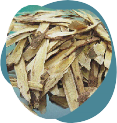
Astragalus
immunity, protection
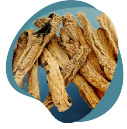
Codonopsis
nutritive, immunity, sweet

Cordyceps
endurance, capacity
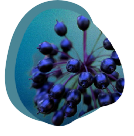
Eleuthero
stamina, balance, immunity

Gynostemma
sweet, vitality

Maca
nourishing, libido

Mucuna Pruriens
joy, motivation

Reishi
spirit calming + wisdom

Rhodiola
stimulating, mood-boosting, cognition
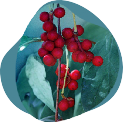
Schisandra
anti-fatigue, hepatoprotective

Shatavari
juicy libido & resilience
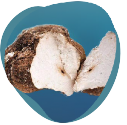
Shilajit
mineral-rich, strength

Tulsi
aromatic, nervine, cognition
Adaptogen Sustainability
Due to increasing popularity, there are emerging long-term sustainability concerns about certain adaptogens. Here at Rasa, we are obsessive about sustainable sourcing. We source over 48 botanicals from 15 different countries, with a focus on ensuring long-term ecosystem sustainability, social responsibility, potency, geo-authenticity, purity, and safety.
Herbalist-driven, integrity-driven brands are mindful of how they impact our planet, the herbs they use, the workers who harvest them, and each other.
These values mean looking at the source of herbs, evaluating any potential risks of overharvesting, and determining which wildcrafted herbs we feel good about (and seeking organic cultivation or further regulation for those we don’t). With cultivated herbs, it also means looking at the growing conditions of those herbs and ensuring purity and potency.
Here are a couple of examples of how we are living these values:
- Our Chief Herbalist, Ben, has been monitoring the sustainability of the adaptogen Rhodiola rosea since he visited China in 2018. Industry experts are now sounding the alarm, and a new study strongly recommends more intensive monitoring for wild harvesting and the switch to cultivation where possible.
- At Rasa, we have committed to stop sourcing wild rhodiola from China and we’re partnering with a new cooperative, the Alberta Rhodiola Rosea Growers Organization, for organically cultivated rhodiola going forward.
- Wild eleuthero root, an adaptogen from the same region of China, is starting to face similar sustainability challenges. We are spearheading a multi-company, multi-year effort to get this precious herb Fair-Wild certified, which will ensure the transparency and accountability needed to protect wild populations.
What Are The Benefits of Adaptogens?
Before we dive into the specifics of what adaptogens do (brace yourself!), we need to point out that regularity is vital to unlocking the benefits we share in this section. These benefits are cumulative in nature and require consistent use over time–so don’t fret if you read about their magical qualities and don’t experience them on your first go. It takes time.
At a high level, adaptogens are balancing
Adaptogens have a balancing effect across our entire physiology, from mood to immunity, keeping our body’s cortisol level (i.e., our response to stress) in the optimal range. Plus, they make us more resilient and adaptable too. #winning
At a more granular level, adaptogens provide:
- Adrenal support
- Stress resilience
- Balanced energy
- Enhanced immunity
- Better sleep
- And more!
Now, let’s dive into the specifics of each of these benefits!
Adrenal Support
The Science
Your body has two main stress-response systems that tell your adrenals to pump you up with cortisol and adrenaline:
- The endocrine system’s hypothalamic pituitary adrenal axis (HPA axis)
- The nervous system’s sympathoadrenal system (SAS)
(Hello, Neuroendocrine, our 4th N)
Adaptogens are eustressors (= good stressors, like exercise) that strengthen and tone the HPA and SAS by mimicking (good) stress in the body.
The Lowdown
Taken regularly, adaptogens help strengthen your stress-response “muscles,” so your body spends less energy dealing with stress and more energy on meeting the demands of life. You know when people talk about “adrenal fatigue?” That’s a misnomer; what people are really referring to is HPA axis dysfunction, which many of us know as the dreaded burnout.
Fun Facts
A six-week research study on ashwagandha and sleep concluded that daily consumption of 125 mg of an ashwagandha extract standardized to 35% withanolides statistically improved many sleep parameters, including sleep efficiency, total sleep time, and sleep latency compared to placebo.
Deshpande, A., Irani, N., Balkrishnan, R., & Benny, I. R. (2020)
Stress Resilience
The Science
Adaptogens regulate stress by limiting how much cortisol (the stress hormone) you secrete in response to stress.
These amazing herbs work in many ways, including via both your hormonal and nervous systems, to help your body cope with stress more effectively. This ability to work through multiple pathways is known as network pharmacology and is the opposite of most pharmaceutical drugs (often considered “one drug, one action, one direction”).
Consuming adaptogens daily (like Rasa 😉) restores balance to your neuroendocrine system and replenishes your reserves so you can access your full potential—the you only you can do!
The Lowdown
Like lifting weights, adaptogens help you more easily handle larger stress loads and recover faster over time, increasing stress resilience overall.
This means it takes you longer to freak out, and when you do, you don’t freak out quite so....freakishly. Plus, you bounce back to your best self more quickly than without adaptogens.
But we want to clarify that adaptogens don’t eliminate your stressors; they just help you cope with them better. It’s still ideal to leave that toxic job or have that hard conversation with your Uncle, if and when possible. And please, please don't use adaptogens to keep overextending yourself when rest is what you really need.
Adaptogen Fun Fact:
Heat shock proteins, first discovered with heat shock through saunas, are powerful proteins that can mitigate the damage high stress inflicts on our bodies (reducing inflammatory and immunological pressure). But you don’t have to sit in a sauna to reap the benefits—adaptogens up-regulate heat shock proteins, too, allowing us to mimic stress like sitting in a sauna would. Whether it’s in the sauna or your morning cup, it’s time to get steamy.
Balanced Energy
The Science
Another effect of chronically elevated cortisol levels is a depletion of our bodies’ metabolic reserves—i.e., our energy stockpile. By keeping cortisol levels within an optimal range, adaptogens regulate cell metabolism, increasing the availability of your energy throughout the day and ensuring we always have what we need.
Because your body is less taxed from fighting stress, adaptogens effectively give your own energy back to you. It’s all you—no Red Bull needed!
The Lowdown
When you get out of constant fight-or-flight, your body begins to normalize, and your energy levels stabilize over time. Afternoon crashes become less of “a thing.” Smooth, steady energy is the magic sauce of consistent adaptogen use!*
As you get more balanced, you have more access to appropriate responses (instead of knee-jerk reactions) to whatever life throws your way.
In the words of Dr. Aviva Romm, “You can’t pour water from an empty cup. Adaptogens help keep your cup full.”
* To quote adaptogen expert David Winston: “Adaptogens are not a replacement for a healthy lifestyle! There is no substitute for the best sleep, exercise, food, & human connection that are available to you.”
Science-is-cool research snapshot:
A research study on ashwagandha showed a reduction in serum cortisol levels in chronically stressed individuals who took 600 mg a day of an ashwagandha extract standardized to 5% withanolides. The treatment group given the high-concentration full-spectrum ashwagandha root extract exhibited a significant reduction (P<0.0001) in scores on all the stress-assessment scales on Day 60, relative to the placebo group.
Enhanced Immunity
The Science
Chronic stress—a condition that arises for the majority of us in the “always-on”ness of modern society—frequently leads to elevated levels of cortisol and inflammation.
Over time, this stress suppresses immune function and decreases the quantity of illness-fighting cells (like lymphocytes) in our bodies, impairing our ability to fight off pathogens. Under stress, our body prioritizes systems that favor immediate survival, and the immune system (and digestion and libido, too, for that matter) is not one of them. It’s a good thing that adaptogens support balanced cortisol levels, as we already explored 😉.
Adaptogens also increase the production of immune cells, including specialized cells like natural killer (NK) and T and B cells. These cells are vital to the strength of our immune system, and regular intake of adaptogenic herbs may help keep immune cells at ideal levels.
The Lowdown
When we’re constantly running on adrenaline and cortisol, our immune system stops getting the resources it needs. We become more susceptible to the havoc caused by a weakened immune system.
Adaptogens—from eleuthero to ashwagandha, rhodiola to reishi, and of course astragalus–are powerful immune tonics that:
- Help regulate our immune system by balancing our cortisol levels
- Work directly with our immune system to help reverse the immunosuppression caused by stress, i.e., they are immunomodulators (because we like to use fancy science words here).
Say this three times fast: Psychoneuroimmunology
This budding field is how we understand our mood, stress levels, and immunity to be intertwined. Since they are all influenced by one another, we can see how adaptogens are vital supports for keeping our immune system balanced and in check.
Better Sleep
The Science
Cortisol is deeply connected to our circadian rhythm, the internal body clock that tells us when to sleep and when to feel awake. In fact, there’s such a thing as circadian cortisol. Chronic stress can dysregulate this natural rhythm and keep cortisol too high into the evening (hello, tired and wired!)
Studies show adaptogens support better sleep by:
- Normalizing circadian rhythm dysfunction via regulating cortisol secretion (which is a main cause of sleep-related problems).
- Helping us deal with both emotional and physical stress (less stress = better sleep!)
- Facilitating deeper sleep via overall HPA regulation.
The Lowdown
Remember how we said the 3rd N was “Normalizing?” When it comes to sleep, adaptogens first reduce the stress response, then bring balance and harmony (i.e., normalization) to our circadian rhythms.
Adaptogen Fun Fact:
Triterpenoid saponins, a class of compounds found in nearly all adaptogenic plants, closely resemble cortisol, our main stress hormone. These compounds seem to be partial agonists at cortisol receptor sites. In less jargon-y terms, this means that while they bind to cortisol receptors, they can both activate the receptor and/or block the receptor, depending on how much cortisol is coursing through our veins. This helps explain how adaptogens work bi-directionally, helping us decrease OR increase cortisol as our body needs (mind: blown).
Additional Benefits
There are even more benefits adaptogens can bring to your body, mind, and spirit, including:
- Supporting healthy lymphatic and circulatory flow
- Supporting healthy blood pressure
- Supporting libido (& some adaptogens are aphrodisiacs!)
- Mental alertness
- Boosting moods
- Faster recovery post-illness or physical activity
- Supporting healing and rebuilding of damaged muscle tissues
- Increased endurance (at the gym, in the bedroom...wherever you play)
- Antioxidants (which help prevent cell damage from free radicals)
- Supporting digestive health
And on the softer side, Ben, our clinical herbalist, says certain adaptogen blends help him “feel my feelings, so I can lighten my emotional stuckness and be present to moments of joyful connection.” That’s a little something we could all use, eh?
What is Adaptogen Washing?
Brands that don’t know any better (or are choosing not to learn about the herbs they use) often use the word “adaptogen” to describe their products….when their products have zero adaptogens.
While they may be using herbs, many of these “adaptogenic” products do not include any adaptogens on the definitive list.
Adaptogens are buzzy right now because:
1. They are potent herbs that serve as medicine of our time because we are all stressed out, sick, burnt out, and need some support;
2. Once something gets trendy, people realize they can make money selling these products.
And while we are fans of all herbs, we’re not fans of mislabeling plants, misleading customers, or adding a “fairy dusting” of an adaptogenic herb (i.e., not an effective dose), all for the sake of marketing.
Gosh, the internet (and marketing and capitalism) can be so troublesome, no? But, it can be wonderful sometimes because we can find the products that help us feel our best. We just have to educate ourselves and be discerning.
Why Adaptogen Washing Sucks
Adaptogen washing is both a dishonest and a misinformed practice. Not only is adaptogen washing misleading to you, the consumer, but it also sucks time, money, and energy trying to figure out what is actually legit. It can also put our plant friends at risk (wasting plants by using them ineffectively is not a good look).
Not all adaptogen products are created equal, even when they contain proper adaptogens. Formulation matters! You can’t throw a bunch of non-adaptogens in with a sprinkling of ashwagandha and expect miracles. Whoever formulates your products must intimately know and understand EVERY ingredient and how they relate to one another, combining them to harness and provide the most benefit and functionality.
Quality herbal formulation ensures:
- your body reaps the most possible benefits
- increased bioavailability
- decreased risk of possible side effects
Not to mention it’s important in the sourcing of safe and effective ingredients, as well.
Adaptogen washing, at best, makes consumers waste money on expensive products that do nothing for them. At its worst, adaptogen washing challenges the credibility of adaptogens (which, if you’ve read this guide, you know are prrrretty darn great) and herbalism overall. After trying several adaptogen-washed products with no visible results, many people write off herbs and adaptogens as ineffective woo-woo. That's a darn shame because herbs are truly powerful and effective.
Additionally, while we at Rasa (and many other integrity-driven brands!) work obsessively to make potent, delicious, high-quality adaptogen blends both accessible and affordable, many companies, unfortunately, have a “how much can we charge for this?” mentality.
(#CapitalismSucks #JustBecauseYouCanDoesntMeanYouShould)
If you ask us, there’s nothing more capitalistic and opportunistic than selling overpriced “wellness” products that don’t actually improve customers’ well-being.
Adaptogen Washing Common Offenders
The following plants, herbs, and substances are frequently called adaptogens when they’re…not. (Those most frequent ”common offenders” are highlighted in bold.)
- CBD
- Chaga
- Charcoal
- Collagen
- Elderberry
- Guarana
- Ginger
- Gingko
- Goji berry
- Kava
- Lion’s Mane
- L-Theanine
- Matcha
- Maitake
- Milk Thistle
- Moringa
- Pearl powder
- Tocos
- Tremella
- Turkey Tail
- Turmeric
Adaptogenic herbs are just one of many herbs that are part of the genius and bounty of nature. Many other types of herbs have their own benefits! Calling an herb by the wrong name just confuses people and takes away what these plants are good at. Plus, the term adaptogens starts to get diluted to the point of not meaning anything!
Put it this way: if we said our product was full of CBD but had no CBD… that’d be pretty obnoxious, right? You might even think CBD was BS (spoiler alert: it’s not).
Or, in non-herb terms, it’s like if we sold you a workout bike by saying it was amazing because it helps you build arm strength. We love bikes; they provide a great workout and can be super fun and pretty, but…arm strength? Not so much. Stay in your lane, folks.
Let’s Talk Mushrooms & Adaptogen Washing
We love mushrooms and how they are finally getting the spotlight they deserve. But with great power comes great responsibility…err…or should we say, with the spotlight, misinformation is never far behind. 😬
Far too many “wellness” products conflate mushrooms and adaptogens. They are not the same! While some functional mushrooms (three to be exact!) are adaptogens, most are…not.
So let’s get crystal clear, the three medicinal mushrooms that are definite or probable adaptogens are cordyceps (definite), reishi, and poria (probable).
That’s it.
Remember how we discussed that many medicinal plants offer many benefits but aren’t adaptogens? Medicinal mushrooms are the same.
While we love and enjoy the benefits of mushrooms like lion’s mane, chaga, turkey tail, and tremella, they don’t exhibit adaptogenic activity. And that doesn’t make them inferior (we love all those mushrooms so much that we use them in our products!); it just means they should not be called adaptogens because they aren’t.
The wellness industry loves to mislabel mushrooms as adaptogens so much that perhaps they are one of the biggest offenders of adaptogen washing (through no fault of our fabulous friends, the fungi 🍄).
When in doubt, refer to the definitive list!
6 Ways to Be Adaptogen-Savvy So You Can Experience the Magic
1. Always read the ingredients: If a product doesn’t contain herbs or mushrooms from The Definitive List of Adaptogens, it isn’t adaptogenic. Period, end of story.
2. Understand a formula's intent: The energetics and specific actions of individual adaptogens are highly variable, and matching the right plants to the right person is something products companies often get wrong. This leads to our next point...
3. Only buy products formulated by clinical herbalists and manufactured by reputable companies.
4. Keep an eye out for imposters. Suppose a product says it has adaptogens and doesn’t. In that case, it’s likely a company that doesn’t know what they are talking about, and the product is almost certainly not clinical-herbalist formulated. This could be a brand just trying to capitalize off the adaptogen trend.
5. Remember, adaptogens aren’t a quick fix; they have a cumulative effect, increasing efficacy as time goes on. So don’t throw away a new product that “just isn’t working” after a few days or weeks. Give it time—the health benefits of these herbs can take anywhere from a few weeks to a month (or a few months!) to fully kick in. It’s best to use products that you can take daily.
Unless your doctor gives you the go-ahead, you should avoid taking adaptogens when you’re:
- Pregnant (due to lack of safety data)
- Breastfeeding
- Taking medications that suppress the immune system
6. Learn about sourcing: some adaptogens have serious long-term sustainability concerns. Ensure the brands you are buying from are committed to sustainable practices. (That goes for all herbs, not just adaptogens!) How herbs and mushrooms are often (over)harvested hurts the environment, damages ecosystems, and puts many plant species under strain.
And, of course, always check with your doctor, herbalist, or practitioner to ensure that the herbs you are consuming are the right ones for you!
Dosing with Adaptogens
Simplifying dosing isn’t easy—and it shouldn’t be. Learning to dose and take herbs and adaptogens effectively is an art and takes time. This practice is best done with an herbalist or by following dosing instructions on a product formulated by an herbalist (reminder to be careful where you buy products!) Let’s cover some high-level basics.
Is more always better?
Adaptogens tend to have two personalities when it comes to dosing. Some adaptogens appear linear in their effect, meaning the more you take, the more intense the effect—like ashwagandha. Others look biphasic—we see the most benefit from a Goldilocks approach that’s not too high or too low, like rhodiola. We’re in search of the “MED,” or minimum effective dose. What is the smallest dose that will give the desired effect? Spoiler alert: this dosage varies from person to person, so it’s always important to test things out and see how you feel.
The Cumulative Effect
We’d be remiss not to bring up (again!) the cumulative effect here as well. While adaptogens increase performance and push off fatigue in single acute doses, repeated consumption is necessary for maximum benefit. Daily adaptogen intake balances our stress response and builds our overall tolerance for stress, particularly the insidious chronic stress we encounter in our productivity-obsessed modern life. Adaptogen intake is akin to exercise in this way—you wouldn’t go to one spin class per month and think you’d get into top shape, would you?
Don’t Forget About Synergy
Lastly, there’s synergy. If you’re consuming multiple herbs, how do the herbs play together? For example, you don’t want to double or triple up on different herbs that have similar effects without taking that into account.
Since we’re talking about dosing (and how to avoid the BS on the internet)—a piece of advice: look for transparent brands with their dosages and herb strengths.
What’s the deal with taking breaks?
When it comes to herbs, if you’re taking powerful extracts or high doses for an acute situation or symptom, cycling on and off can be helpful. If you take a synergistic blend formulated for daily and long-term use, breaks may not be necessary. Listen to your body. For example, we intentionally formulated Rasa for daily use. We don’t go purely for energy but also lean heavily into nourishing and replenishing adaptogens designed to be used for the long haul (let’s be BFFs? K cool).
Our Chief Herbalist Ben likes to say: be aware of how much you’re pressing the pedal vs. filling up the gas tank. Strong single extracts can press the pedal too aggressively, and cycling or short-term use is recommended. Filling the tank can be accomplished with lower doses of long-term-use friendly adaptogens and blends (like Rasa—told you we’d plug ourselves a few times here and there! 😛)
Summary
Hi there! 👋
Before you go, we wanted to introduce ourselves. We’re Lopa and Ben, Founder & Co-Founder of Rasa, an adaptogenic coffee alternative brand. We’re obsessed with herbs, adaptogens, sustainable sourcing, and transforming the way people energize.
We’re so over the adaptogen misinformation out there. We’re excited to share sound, scientific, and traditional knowledge on these incredible plants so you have a reliable reference and can feel confident using adaptogens.
We sell adaptogen-focused products, so we want to be transparent about our inherent adaptogen bias! But beyond furthering our own mission, we want to educate the market and you, dear human. While this guide isn’t intended as a promotional tool, we sometimes reference how Rasa operates since we speak from our perspective and experience.
Lopa is our Founder & CEO and a longtime herb enthusiast and Ayurveda student. She’s been taking adaptogens and educating friends about them since wayyy before they were cool. She started Rasa in her kitchen in 2015 before launching it publicly in 2018.
That’s when Ben, a clinical herbalist, joined as Chief Herbalist and Co-Founder. Before Rasa, Ben sourced 10 million (you read that right) pounds of herbs a year for Celestial Seasonings. He’s read over 100 peer-reviewed papers while formulating our products and has always kept up on the newest herb research. He’s also an active member of the herb industry’s push toward ever-more sustainable practices.
We’ve spent hundreds of hours studying adaptogens and reviewing this guide for accuracy. We’re also grateful for herbalist and writer Sara Weinreb who helped with the research and writing of this guide, and Alexandra Owens, who made it gorgeous.
Whether you source adaptogens from us or others, this guide will empower you to enjoy adaptogens safely and effectively to experience these herbs' life-changing, stress-reducing, energy-balancing magic and not waste your dollars.
We’ll keep this up to date as scientific adaptogen research evolves. We love to hear from you—if there’s a brand you want us to check out or new info we should know, send it our way!
💛,
Lopa + Ben
P.S. This is not a comprehensive guide (there are whole textbooks on adaptogens!) but it is an excellent starting point. Now that you’ve read this, you’ll be among the most adaptogen-educated consumers!

Bibliography
If this guide did its job, you are likely wondering where we sourced all this information and how to be sure it’s accurate. Here’s where we pulled from!














